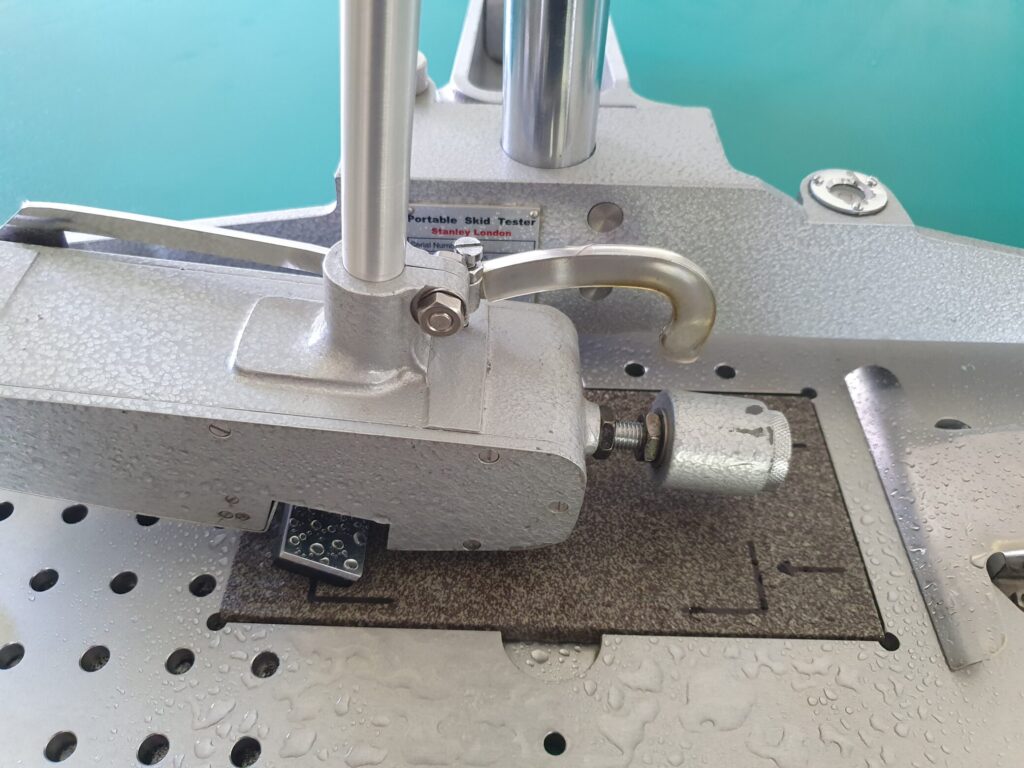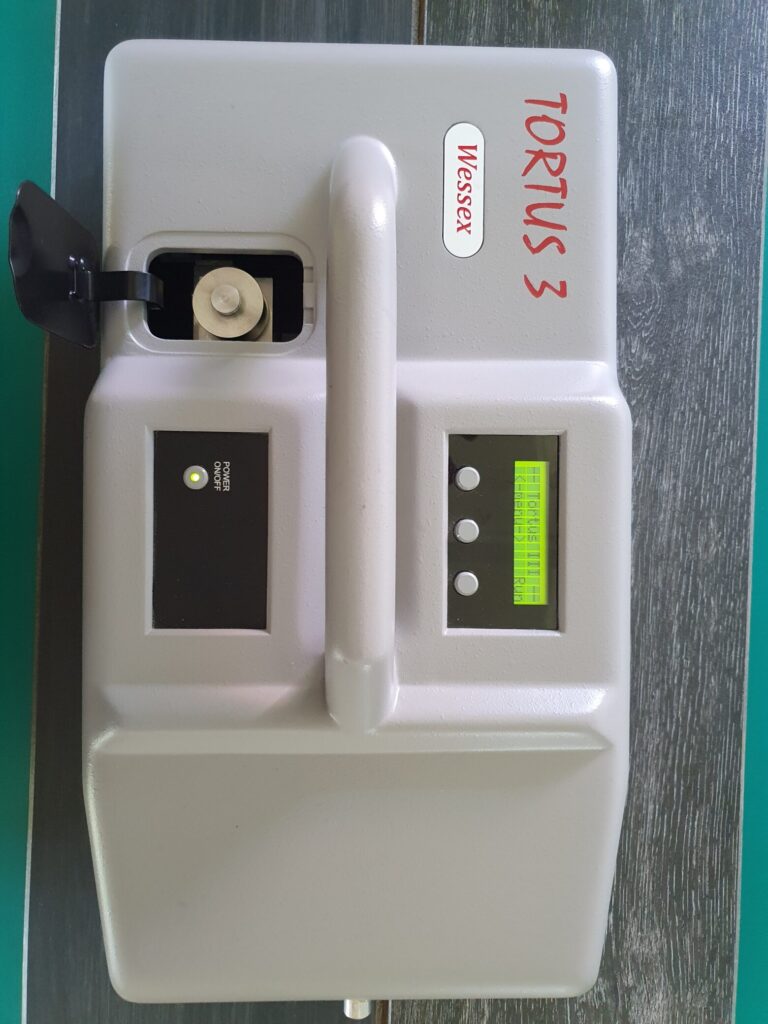Slip Resistance Measurements
A new pedestrian surface is considered to become an existing pedestrian surface once it has been installed and made available for pedestrian traffic, other than movements specifically for purposes of formal testing to determine compliance with AS 4586.
New pedestrian surfaces are to be tested in accordance with AS 4586
This Standard provides methods of measuring the frictional characteristics of existing pedestrian surfaces in wet and dry conditions.
Note:: This Standard does not specifically cover gratings, although it is possible to use the test methods specified herein for some gratings.
Provision has been made for either of two rubbers to be used in the wet pendulum test method. Clay and concrete pavers have traditionally been tested using Slider 55 (TRL rubber), whereas Slider 96 (Four S rubber) is used for other pedestrian surfaces. When testing highly profiled surfaces such as shown in Figure I, Slider 55 (TRL rubber) generally produces more consistent results than Slider 96 (Four S rubber). The standard Slider 96 (Four S rubber) was prepared so as to have poor abrasion resistance such that the rubber would be less likely to become contaminated, as fresh surfaces would be produced during testing. It was also formulated to be temperature independent. When assessing products for wet barefoot areas, or unusually rough products, the use of the softer more resilient Slider 55 (TRL rubber) is preferable.
SOURCE: AS 4663 – 2013 Slip resistance measurement of existing pedestrian surfaces
Classifications
SlipLab undertakes both laboratory and in-situ testing in accordance with AS 4586, to verify the slip-resistance classification of a surface or material.
SlipLab is accredited by the National Association of Testing Authorities (NATA) to specifically undertake slip-resistance testing according to AS 4586 Appendix A Wet Pendulum Test Method and AS 4586 Appendix B Dry floor friction method.
We offer priority in situ testing for construction site handovers.
We provide Sydney’s cheapest prices with fast turnaround.
For samples delivered to our laboratory in Mortdale NSW 2223 laboratory the prices are:
Pendulum Test Method
Ex GST. Per classification.
Dry Floor Friction Test Method
Ex GST. Per classification.
Wet Pendulum Tests

Slip resistance classification of new pedestrian surface according to AS 4586 2013 Appendix A
Wet Pendulum Test Method – ‘P’ Rating
(Slider 55 or Slider 96) – If not specified which slider to use, slider 96 will be used by default
Sample Requirements
- Five (5) whole tiles, if tiles smaller than 150 x 150 mm contact us to confirm requirements
- For flooring products that are either coating system (paint epoxy, etc) or a sheet type product (vinyl, rubber, carpet, etc) then (1) specimen being a minimum size of approximately 1000 x 500mm is required.
- A ‘mounting and grouting’ fee of $150 applies for any small tile samples (50mm x 50mm or less) supplied unmounted, such as unmounted mosaic tiles
All flooring products shall be supplied as they would be on a finished pedestrian surface. Therefore, samples must be fully cured, sealed, polished etc. Any flooring product that consists of small discrete elements such as mosaic tiles (50x50mm) are required to be mounted and grouted to a suitable substrate.
Dry Floor Friction Test

Slip resistance classification of new pedestrian surface according to Appendix B
Dry Floor Friction Test Method – ‘D’ Rating
Sample Requirements
Test samples shall be such that they provide a cumulative minimum test path of 800mm.
If the samples consist of small tiles (50mm x 500mm or less), they shall be fixed to a suitable surface, spaced, and grouted to manufactures specifications as they would be on a finished pedestrian surface.
DEFINITIONS
SLIP RESISTANCE MEASUREMENT OF EXISTING PEDESTRIAN SURFACES
For the purposes of this Standard, the definitions below apply.
British Pendulum Number (BPN)
The ratio of the tangential force required to move a body across a horizontal surface to the vertical load imposed on the surface by the body.
Slope design value (SDV)
The mean BPN value required on a slope of a known maximum gradient.
Dynamic coefficient of friction
The coefficient of friction required to maintain movement at a constant speed
Friction
An intrinsic property of two interfacing, interacting surfaces resulting from their micro- and macro-roughness, inter- intra-molecular forces of attraction and repulsion, and their visco-elastic properties.
Profiled surface
A surface with a designed raised geometrical pattern that provides volumetric displacement.
Sample
A prescribed number of individual test specimens, which together are considered a reasonable representation of a single type of pedestrian surface and its condition.
Specimen
An individual pedestrian surface test location.
Slip resistance value (SRV)
The mean BPN value for the sample that has been tested and calculated in accordance with Appendix A, regardless of whether the surface was level or on a slope.
Slip resistive
Property of a pedestrian surface where the available friction is sufficient to enable a person to traverse that surface without an unreasonable risk of slipping.
Slip resistant
A property of a surface having a frictional force-opposing movement of an object across a surface.
Slope correction value (SCV)
When the slip resistance of a sloping surface of known maximum gradient is measured , the SCV is an adjusted SRV, giving a value equivalent to that of the equivalent SRV for a level surface.